In Malta, buildings cover one third of the Island, leaving greenery in the dirt track. Green roofs are one way to bring plants back to urban areas with loads of benefits. Antoine Gatt, who manages the LifeMedGreenRoof project at the University of Malta, tells us more.
Winter in Malta sees reasonable downpours, flooding roads turning some areas into water wonderlands; summer sees air conditioners being switched on with bills sky rocketing and the occasional power cut. These are common problems for highly urbanised areas with few green spaces. Flooding occurs because water cannot seep and percolate into the underlying rock. Urban areas also act as heat islands because hard surfaces absorb the sun’s energy releasing it during cooler periods that cause air temperatures to spiral upwards. Green areas reduce these problems. 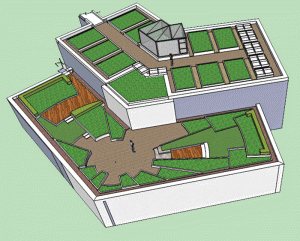
Malta is not the only place suffering these problems. The situation is chronic in large cities within mainland Europe. The European Commission has stepped in by issuing publications to encourage member states to move towards sustainable urban areas and is enforcing directives to reduce the carbon footprint of buildings.
“Green roofs have an important part to play in making towns and cities more sustainable and better places to live in. “
Green infrastructure involves making urban spaces greener to provide services to the community and increase the quality of life. It provides ecosystem services, ranging from jobs to cultural benefits, to aid people. Importantly, it mitigates urban problems that include flooding, pollution, and the heat island effect. This infrastructure makes urban environments sustainable, providing services that are much cheaper than their cost.
Germany led the way in green infrastructure with the rebirth of green roofs, roofs covered by vegetation and growing medium. Their development originally began for aesthetic and practical reasons. However, over time, roof greening clearly started showing advantages for the whole community. Research has shown that green roofs are capable of mitigating urban related problems and increase the quality of life. The technology has been so successful that it has been replicated on s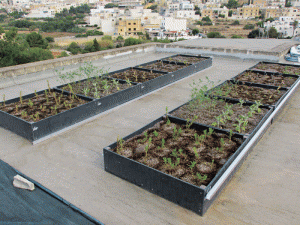 ix continents. The majority of green roofs have been constructed in Central and Northern Europe. These countries invest the most in research into green roofs and government incentives that encourage their installation on buildings.
ix continents. The majority of green roofs have been constructed in Central and Northern Europe. These countries invest the most in research into green roofs and government incentives that encourage their installation on buildings.
Although gaining ground, green roof research within the Mediterranean region lags behind. Green roofs have an important part to play in making towns and cities more sustainable and better places to live in. The Mediterranean’s hot climate could be mitigated with these roofs.
My interest in green roofs germinated during a visit to Monaco years back. It was reinforced when I visited the Jardin Atlantique, a green roof atop the Montparnasse station in Paris, for a field trip while reading for a degree in landscape architecture. I saw the beauty of these roofs and the potential they had back home first hand.
Green Roofs in Malta
Green roofs in Malta have never really taken off because of misconceptions and the fear of flaws leading to issues like water leaks. There are other problems.
Green roofs in warmer climates often report plant failure especially when using stonecrops (Sedums ssp.), which are normally used in Northern Europe. Water management is another issue with Malta’s poor and irregular rainfall. Another problem is that green roofs cannot use soil. Soils tend to be heavy especially when saturated. They become compacted, loose bulk, and contain silt and clays that lead to ponding (water collection). If green roof technology is to advance locally it needs to be convenient, easy to maintain, reliable, and cost effective.
To solve these problems, back in 2013 the EU funded (LIFE+ programme) a LifeMedGreenRoof project to create a baseline study about green roof construction and performance in Malta. The idea is to demonstrate the potential green roofs have to solve urban problems by reducing storm water runoff and improving a building’s energy consumption.
“Malta is not an easy climate for green roofs. There are issues with high winds and temperatures, plant choice, heavy rains, and soil type.”
The Faculty for the Built Environment (University of Malta) manages the project. Three other partners are involved. Both Minoprio Analisi e Certificazioni (MAC; a horticultural laboratory) and Fondazione Minoprio (FM; a research and educational establishment specialising in horticultural/agribusinss) have ample horticultural knowledge in terms of plant choice, propagation and cultivation of green roofs. The Malta Competition and Consumer Affairs Authority (MCCAA) will be responsible for drafting a document to set a national standard on green roof construction.
Malta is not an easy climate for green roofs. There are issues with high winds and temperatures, plant choice, heavy rains, and soil type. The growing medium for plant cultivation needs to be suited to Malta’s climate. Rainfall is generally sporadic, heavy, and concentrated over a short period of time, between late September or early October, and February. The rest of the year is very dry so some irrigation is necessary. This weather pattern means that the media used should be free-draining but able to retain enough moisture for the plants to survive the dry months. Ideally the growing media components should be sourced locally. Tests have been carried out on media made from locally produced compost, soft-stone and hard-stone aggregate, and crushed concrete but these were not adequate because of their chemical make-up, especially their high pH levels. Inert industrial waste was unavailable. As a result, materials were sourced from abroad. The use of local materials would have been ideal since they would have reduced the green roofs’ carbon footprint, as well as reducing waste and transport costs.
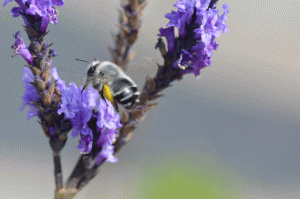 Our next problem to solve was which plants to use. This time we managed to go local. Plants are essential in making the roof look beautiful, trap water, and trap solar energy. Not all plants are able to survive the microclimate at roof level. The stonecrops used in Northern European temperate climates are not appropriate for Malta because of its semi-arid climate. On the other hand, indigenous species are adapted to local conditions and generally require less maintenance—they grow naturally in the wild.
Our next problem to solve was which plants to use. This time we managed to go local. Plants are essential in making the roof look beautiful, trap water, and trap solar energy. Not all plants are able to survive the microclimate at roof level. The stonecrops used in Northern European temperate climates are not appropriate for Malta because of its semi-arid climate. On the other hand, indigenous species are adapted to local conditions and generally require less maintenance—they grow naturally in the wild.
By studying the native flora habitats we decided that plants from the garigue habitat (xagħri: stony ground with shallow pockets of soil) would be the best contenders. The garigue habitat conditions are very similar to what plants experience on roofs: they tend to be exposed to high winds and solar radiation with limited soil depth. Over 15 species of native perennial (long-living) shrubs were earmarked for testing.
We constructed 20 test trays (1 m x 1 m) from recycled plastic and filled them with two different growing media. Our horticultural partner, MAC, produced them especially for Malta. They ran lab trials on many different media to identify these two specific mixes for the Maltese trials. Our Italian partners are also running parallel green roof tests in Italy.
Green roof growing media is normally composed of very little organic matter, in our case, a maximum of 25%. The rest of the growing media is volcanic aggregate, ranging from 3–10 mm in diameter. The difference between the two mixes is that one has biochar while the other does not. Biochar is a type of charcoal used in horticulture to enhance soil fertility.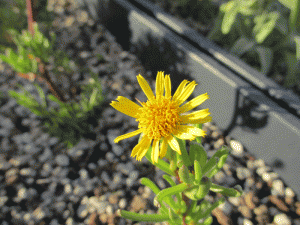
In 2014, we planted the test trays with one or two species of the selected plants. Both growing media mixes had the same plant species and planting configuration to compare the effect of biochar and see how the plants fare on the green roof. The plants are being monitored by overhead photography to analyse their development. To date, we have had few losses (less than 5%).
Plant development has been very encouraging. All plants have reacted well to the growing media, although growth in the biochar mix has been slow. The plants are growing healthily especially the Rock Samphire (Crithmum maritimum), Shrubby Crown Vetch (Coronilla valentina ssp. glauca), Greater Snapdragon (Antirrhinum tortuosum), and the native perennial Mediterranean Stonecrop (Sedum sediforme).
The Future is Green
In the coming months, the test trays will be replaced by a fully-fledged green roof. On the building of the University’s Faculty for the Built Environment a higher roof level will be used as an open air laboratory, with a public garden in the larger lower level. This garden will be open to all visitors so that everyone can appreciate the potential of green roofs in Malta.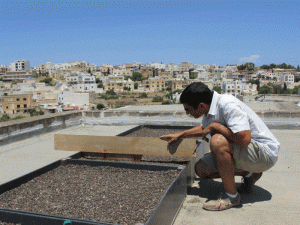
The next step will be to test just how much energy saving and storm water mitigation green roofs in Malta can achieve. The roof and underlying rooms will being monitored to see if these rooms are cooler and need less air-conditioning. Water run-off will be monitored to quantify the potential green roofs have in controlling local flooding. Armed with the above data, the project will be in a position to showcase roof greening in Maltese towns and villages. For green roofs to be effective, the area green roofs cover needs to be large, a single green roof will only benefit the owner and maybe neighbours.
The greatest hurdle for green roofs is whether households and businesses will buy into the technology. Cost is the main stumbling block, although private individuals, educational institutions, design professionals, and corporate bodies have already approached us. Cost depends on the type of green roof (whether intensive or extensive) and plant choice. The initial capital should be recouped relatively quickly. A green roof would increase the property’s value, and the value of nearby properties. In Paris, the rent of apartment buildings around the Montparnasse station skyrocketed after the Jardin Atlantique was built.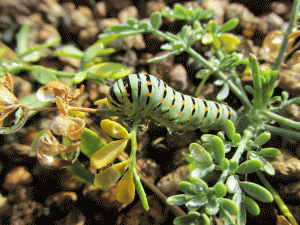
After cost, irrigation is the second hurdle. Water is needed to maintain a healthy plant community. Summers in Malta are long and dry. Whichever plants are used, irrigation is required, and this might be a drawback for buildings without a water cistern or well. However, water needs depend on the plant species used with native vegetation generally requiring less irrigation. Our tests are showing that plants cultivated in the biochar growing media require less water. At their driest, the maximum amount of water given per week to each plant is 1.5 l. Between October 2014 and April 2015 the plants were not irrigated. Last winter was particularly wet, but these are still promising trials.
To date, the results are very encouraging. The plants are growing well and have attracted many beneficial insects. The Maltese swallowtail butterfly (Papilio machaon ssp. melitensis), numerous bees, and other insects have been recorded. Green roofs might just help Malta become a cooler and more beautiful country.
To learn more about the LifeMedGreenRoof Project visit www.lifemedgreenroof.org or follow on Facebook www.facebook.com/lifemedgreenroofproject. To arrange a visit contact 2340 3621, antoine.gatt@um.edu.mt or vince.morris@um.edu.mt. The project is part-financed by LIFE+ programme which is the EU’s funding instrument for the environment and climate action ec.europa.eu/environment/life/about

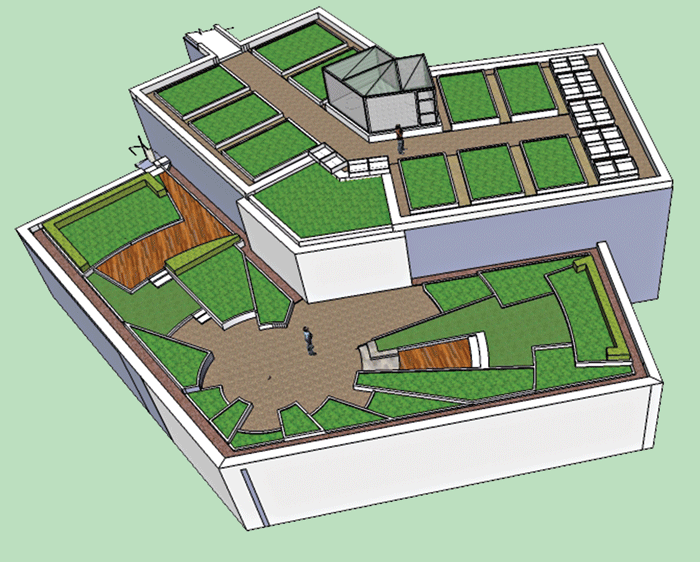
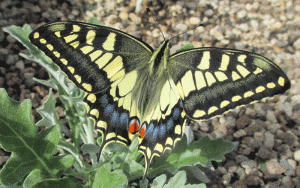



Comments are closed for this article!